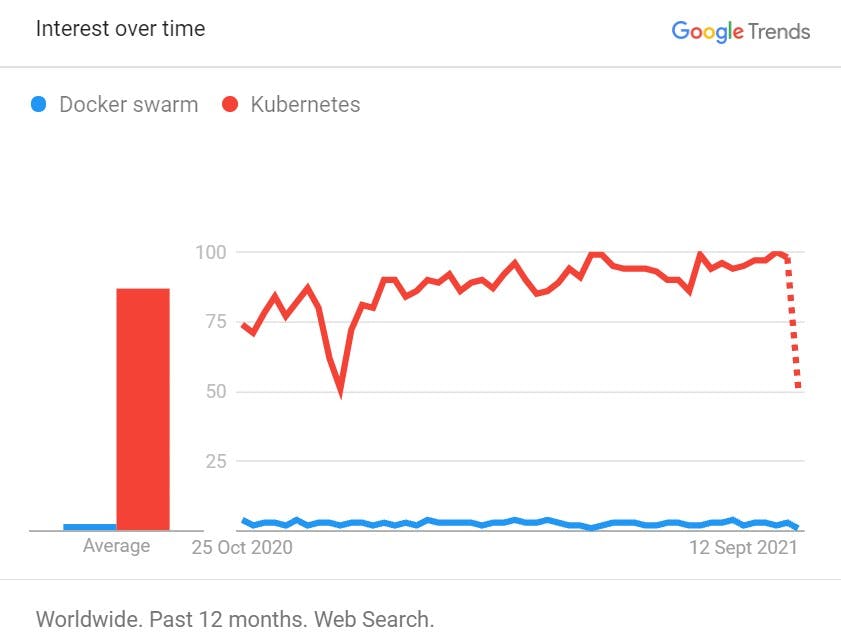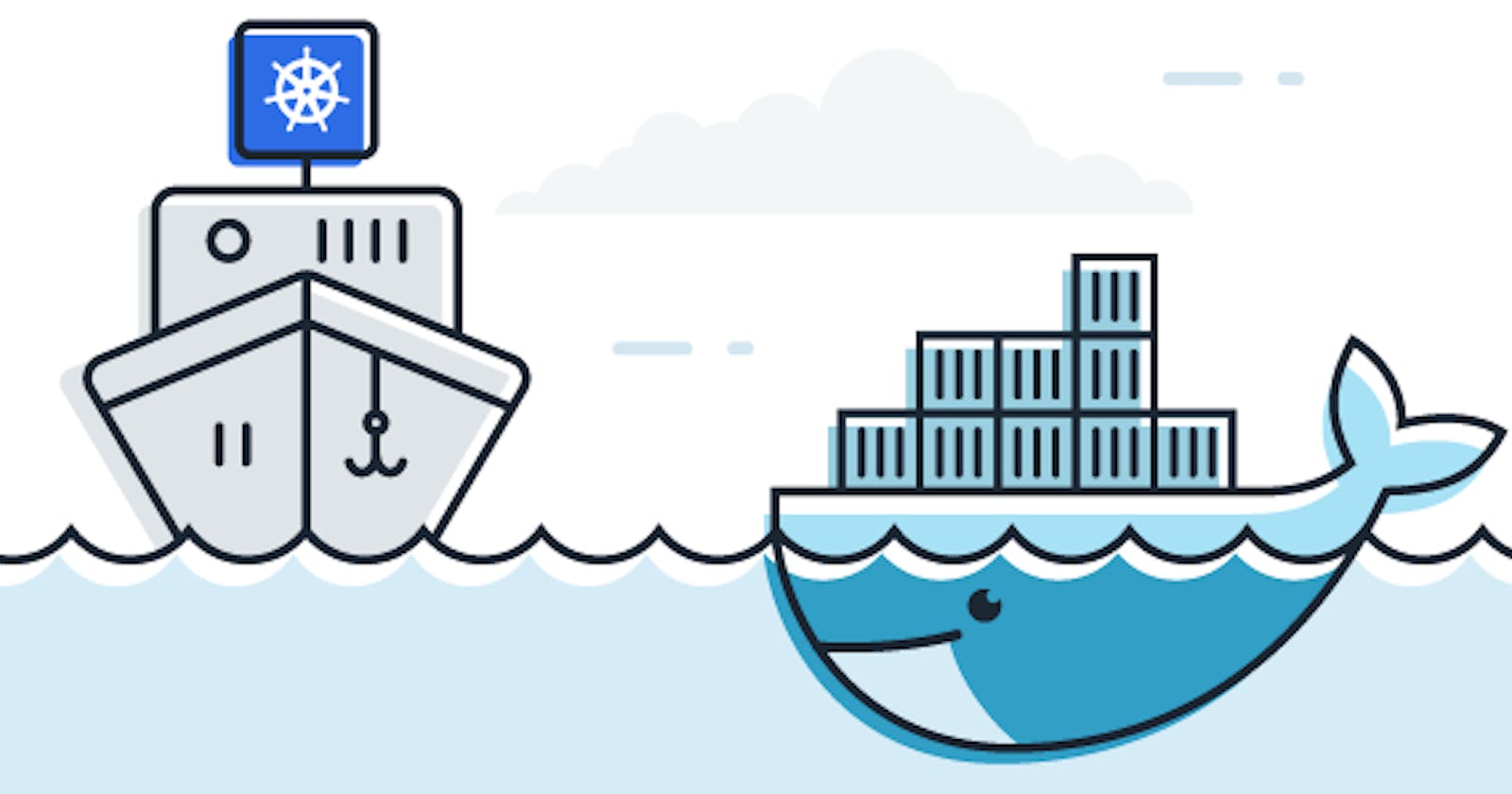 Docker and Kubernetes are two of the primary technologies in the world of containerization, but are they competing for the same goal? Not really. This article explains what containerization is and how Docker and Kubernetes can complement each other. Further, we also explain the benefits of containerization and orchestration technologies.
Docker and Kubernetes are two of the primary technologies in the world of containerization, but are they competing for the same goal? Not really. This article explains what containerization is and how Docker and Kubernetes can complement each other. Further, we also explain the benefits of containerization and orchestration technologies.
What is containerization?
Containerization allows developers to package software code and associated components that are required to run (such as frameworks, libraries, and other dependencies) into a single isolated container. Therefore, any software or application in a container can be easily moved and deployed in a separate infrastructure, regardless of the operating system or infrastructure environment.
The container allows software code to be more portable (can be easily moved between platforms and infrastructure) and secure, as it allows developers to build and deploy consistent applications across multiple operating systems. However, keep in mind that not all software code can be designed in a microservices architecture. that is, UI-intensive virtualization of applications is performed at another hypervisor level with Vagrant and others.
Before containers, developers used to code in a specific computing environment. When they want to move it to a new location (for example, from Linux to Windows), the code is very vulnerable to bugs and other errors. This is a major problem that containers provide solutions for because they abstract software code from the host operating system, making it independent and able to run quickly anywhere without worrying about bugs or other issues.
In short, thanks to containers, applications can be encapsulated in independent environments and their main advantages are: scalability, faster deployment and greater consistency between environments. Not everyone uses containers, but the numbers have shown a known growth over the years.
"The report found that 60% of backend developers worldwide are now using containers. Compared to the second quarter of 2019, there was an average 10 percentage point (pp) increase in container usage." (State of Cloud Native Development, 2020)
What is Docker?
Docker is a widely recognized containerization platform used to develop, ship and run any application as a portable and standalone container. It can run almost anywhere, from desktops to cloud environments and data centers. In addition, over the years, Docker has developed many tools to provide a "complete" platform for everything containerization related. However, that does not mean that all of their tools are the ultimate solution, given the intense competition and the quality of technology that is developing in the field.
One of the main tools is Docker Engine, a runtime environment that allows developers to build and run containers on any development engine. To run a Docker container, you can choose to start with a Docker file, which is a file that explicitly states everything needed to run a Docker image (for example, operating system network specifications and file locations). In turn, Docker images are portable static components that can run on the Docker Engine. Once the container is created and ready to run anywhere, developers can archive or share container.
However, just to clarify, you don't need to have a Dockerfile to run a container. Instead, developers can first search container logs (such as DockerHub and Azure Container Registry) and extract existing images from container logs, saving a lot of time and effort. Typically, these logs include a large number of publicly generated images. Therefore, and this is the takeaway key for running a Docker container, you can simply extract the image from the public container registry or customize the image using a Dockerfile.
As we can see, Docker provides an open source solution for packaging and distributing containerized applications. However, as the number of containers increases, so does the complexity of managing them. Therefore, it is important to ensure several aspects (which are included in some orchestration tasks), namely:
- Communication between users and containers
- Simultaneously handle several users
- Multiplatform deployment. How to achieve synchronization across multiple platforms and cloud environments?
- Scalability of numerous containers instances.
To address these and other complexities, Docker developed Docker Swarm, a container orchestration technology. To be precise, it (Docker Swarm) is a Docker technology that is usually compared to Kubernetes, not the entire Docker platform itself. In fact, Docker is the default and basic technology for Kubernetes, which natively uses Docker as its runtime and pulls images in the same way developers do manually - using Docker commands. However, Kubernetes also supports other Docker alternatives.
What is Kubernetes?
As you may have guessed from the previous paragraph, Kubernetes is a container orchestration technology (such as OpenShift or ECS) and Google introduced it in 2014, a year after Docker was released. Today it is controlled by CNCF (Cloud Native Computing Foundation).
Kubernetes was developed to help users plan, manage, automate deployment, and scale containerized applications. It is a technology that manages containerization and their respective workloads, overcoming the complexities of efficiently managing large numbers of containers on separate servers.
In that sense, Kubernetes provides an open-source API that regulates how and where containers run. In this technology, containers are grouped into pods, the basic operational unit for Kubernetes. Once grouped, containers and pods can easily be scaled to another state, and developers can control their lifecycle. Hence, Kubernetes enables the orchestration of virtual machines (VMs) and allows developers to schedule containers to run on those VMs, according to their compute resources and the requirements of each container. Very simply put, when developers require to release code, they simply indicate which cluster is required to update, and the platform handles the connection management.
Moreover, Kubernetes supports a vast number of containerization tools, including Docker, which leads us to the next topic.
Docker vs Kubernetes? It should be Docker + Kubernetes
As mentioned, if we want to compare Docker with Kubernetes, a fairer comparison would be between Docker Swarm and Kubernetes, both of which are container orchestration technologies. To be sure, Docker can drive market share in containerization, but not as successful if we look at orchestration technology. Kubernetes is wider and the leader in that race, with 80.9K stars on Github compared to Docker Swarm's 5.8K stars.
 Docker itself and Kubernetes are indeed complementary technologies. Even though they both have the same role, they are actually very different and can work together perfectly. As is clear by now, Docker is one of the key technologies behind Kubernetes, being able to manage Docker-instanceed containers through the full control plane.
Docker itself and Kubernetes are indeed complementary technologies. Even though they both have the same role, they are actually very different and can work together perfectly. As is clear by now, Docker is one of the key technologies behind Kubernetes, being able to manage Docker-instanceed containers through the full control plane.
Additionally, Kubernetes includes many useful features for managing container orchestration, such as load balancing, security, networking, integrated isolation mechanisms, self-healing, and the ability to scale all nodes running on the containers you create.
Benefits of orchestration solutions
We need to understand how useful these two can be to get the most out of the combination of Docker and Kubernetes. According to the "State of Cloud Native Development" 2020 report, despite the popularity of containers, not everyone actually uses orchestration technology to manage them, and the reason is that not everyone needs them, especially when working with small, low applications and a controlled number of containers. More precisely, along with the development of software requirements, the required applications must also be adapted to containerization. Therefore, to truly benefit from a microservices architecture, all requirements must be in place. Otherwise, instead of profit, containerization becomes another responsibility in the technology stack.
Therefore, using Kubernetes or a similar tool is not mandatory; it is, however, highly recommended for infrastructures that wish to scale and that must handle a very high number of containers across distributed systems. According to the 2020 report "Containers in the enterprise - Rapid enterprise adoption continues" conducted by the IBM Market Development & Insights, only 15% of the respondents Never Use containers without orchestration solutions.
 % of respondents using orchestration solutions
% of respondents using orchestration solutions
Further, according to the respondents, these are the top benefits of using orchestration solutions:
- Provides robust security
- Increases productivity
- Minimizes human error
- It is easily portable and vendor agnostic
- Delivers cost savings by optimizing resource usage
- Reduces the risk of application downtime with rolling deployments and automated rollbacks.
Is Kubernetes dropping Docker?
As announced upon Kubernetes 1.20 release, "Docker support in the kubelet is now deprecated and will be removed in a future release.". Initially, this caused a bit of panic as many developers thought that this would be the end of Docker and, consequently, the end of the great combination of Docker plus Kubernetes. Fortunately, on the 2nd of December 2020, Kubernetes launched a blog post clarifying that "It's not as dramatic as it sounds".
Summing up the difference between Docker vs Kubernetes
Even though it is not necessarily the best approach for every workload or application, the benefits of containerization have captured the attention of many developers and businesses. Some of the top advantages include improved application quality, improved productivity, reduced application downtime, and faster response to changes. But how can Dockers and Kubernetes work together to make the most out of containerization?
On the one hand, Docker enables developers to package their applications into isolated containers through the command line. Afterward, those applications are able to run across the developers' IT environments.
On the other hand, Kubernetes offers an orchestration solution that schedules and automates containerization tasks, such as management, scaling, deployment, and networking throughout the application's lifecycle.
Therefore, Docker and Kubernetes can - and often should - complement each other. Moreover, combining these technologies with DevOps practices can provide a baseline of microservices architecture that allows for fast delivery as well as scalability of cloud-native applications.
